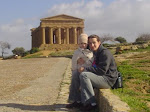After reading chapter six, I found psychoanalytic interpretation to be the most compelling interpretive approach to folklore. I have studied Bruno Bettelheim and find his work to have a significant association between psychoanalysis and it’s relation to “symbolic metaphors for puberty, sexual maturity, seduction and death” no matter how strange the correlations are they seem to exist (189). Knowing this information about Bruno Bettelheim allowed me to better understand Alan Dundes.
Alan Dundes “continues to work to illustrate the value of this approach through his own analysis of texts as well as through outright arguments about the power of this kind of interpretation” (188). Dundes completed essays on the psychoanalytic interpretations of folklore including “the ritual calling of “Bloody Mary” (188). Quite familiar with Bloody Mary, I was surprised to read Dundes interpretation of the ritual. Not once when I was a young girl performing this ritual in the bathroom of my cousin’s house did I ever relate it to my first menses, nor did my sister or cousin who also played the game. We thought of Bloody Mary as simply a scary game to play. We would pile in the bathroom, turn off the lights, decide who said “Bloody Mary” three times, turn in circles three times, turn on the flashlight, look in the mirror and run out screaming. That was our game.
After reading Dundes interpretation and the psychoanalytical parallel, I now see why and how he could come to his conclusion. He provides reasons to back up his interpretations: context, language, and images (188-189). The context serves as an “anticipatory ritual, average American girl’s menarche is twelve and a half, the girls performing the ritual are usually between the ages of seven and twelve” (189). The language in the ritual, reciting the name “Bloody Mary” implies the connection to the “Virgin Mary, and the risk of pregnancy” (189). Also, the word “Bloody” signifies the relation to menstruation. The last of the reasoning is images. The reflection in the mirror that one is supposed to see is an image of a woman with blood on her face, this relates to self-image (189).
The psychoanalytic interpretation of Alan Dundes has allowed me to look closer at the ritual/game I once played as a young girl. I never thought of “Bloody Mary” in the relation to menstruation or as an anticipatory ritual upon attaining puberty. Also not to forget, this ritual is performed in the bathroom. As bizarre as the connection may seem, the interpretation is apparent through Dundes research. Never again will I think of Bloody Mary as just a scary children’s game.
“This blog entry is my response to the chapter six reflection question.”
Sims, Martha C., and Martine Stephens. Living Folklore An Introduction to the Study of People and Their Traditions. Logan, Utah: Utah State University Press, 2005.
Sunday, December 2, 2007
Subscribe to:
Post Comments (Atom)








1 comment:
Well done
Post a Comment